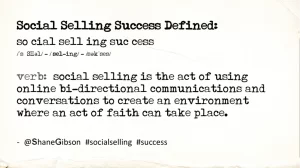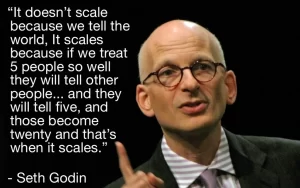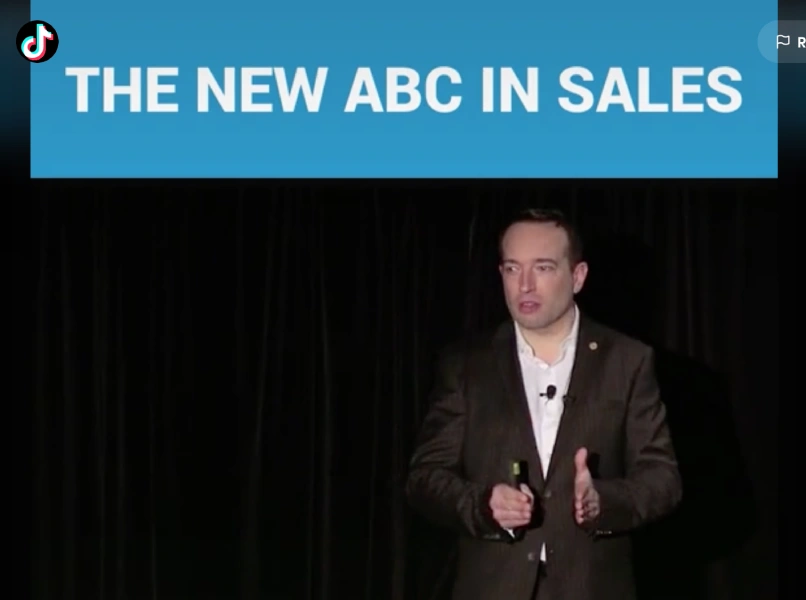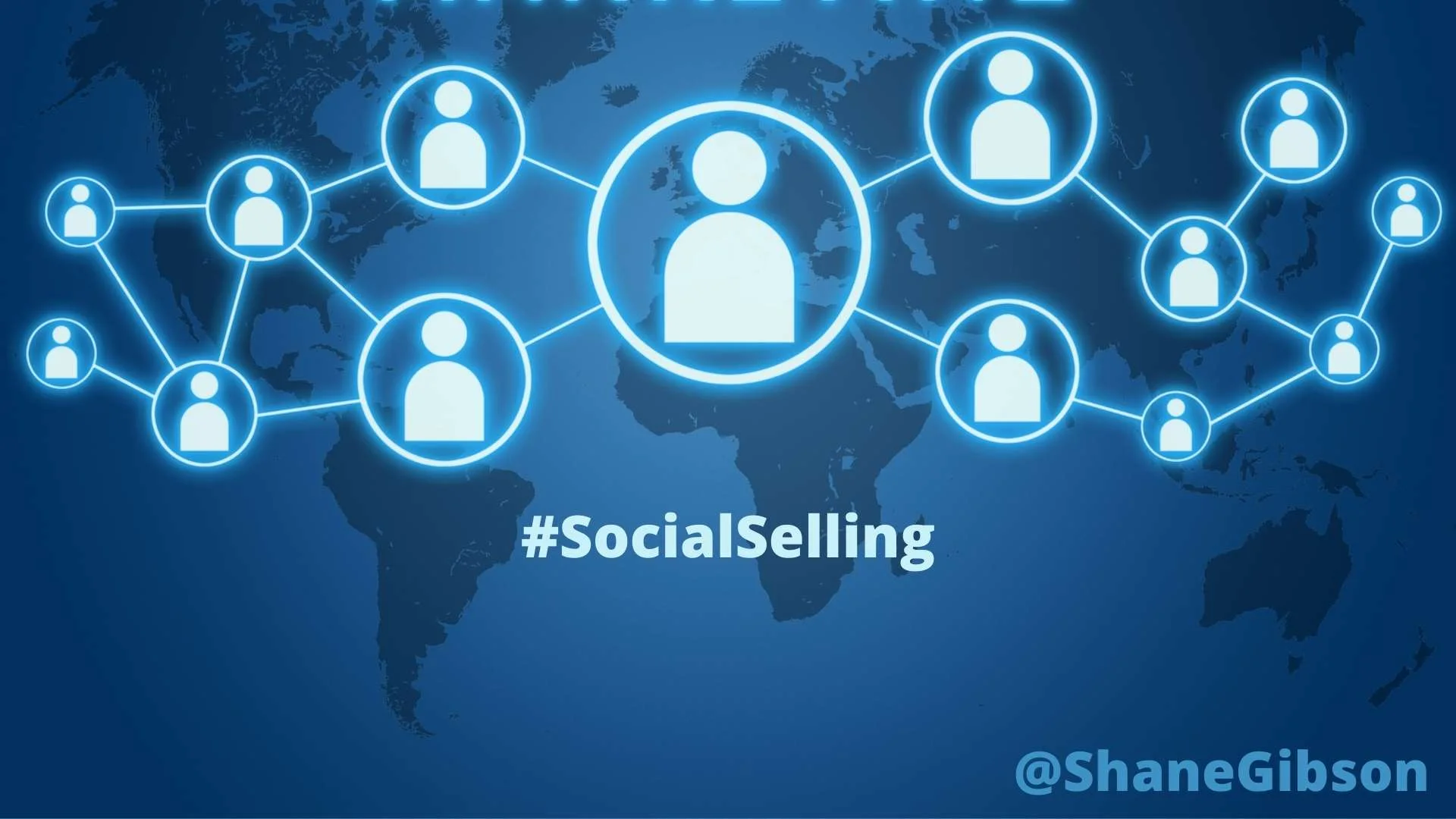What’s the definition of Social Selling?

Definition of Social Selling
What is Social Selling and do I really have to do this social selling thing?!?
I often have one or two people approach me after a seminar and they ask me “Do I really have to do this social media thing? Is social selling really necessary for an experienced [insert profession: realtor, financial advisor, banker, car dealer, engineer etc.]?” I started getting this question in 2009 when Stephen Jagger and I just launched our first book on social media for sales professionals and entrepreneurs (called Sociable!). 7 years later and 1.5 billion more people on social media and I still get the question.
My answer is still the same:
If you have all the business you can handle for the next 24 months and plan on retiring after that, and you have succeeded so far without the internet – then just retire and don’t worry about it. – On the other hand if you intend on being in business for the next 3,5,10 years or more, social media and social selling are not optional tools and strategies, they will become increasingly vital to your success. Before I go any further into why you need to make social media and social selling a top priority lets really look at what “social selling” is.
What is social selling?
It’s important to look at social selling as a layer of technology embedded into every aspect of what you do. It doesn’t live in one particular stage of your sales funnel, it’s connected to everything and everyone. Great social sales people learn how to use social media and social networks to be present and relevant in every step of their buyer’s journey.
In our book Closing Bigger the Field Guide to Closing Bigger Deals, Captain Trevor Greene and I defined selling as follows:
“Sales is about creating an environment where an act of faith can take place.”
When you define “social” it’s human, emotionally charged and conversational. For social to be effective it has to be a bi-directional communication. They call it “social media” for a reason, it’s about two-way conversations that drive engagement, emotions and deepen relationships.
Putting these two definitions together:
Social Selling: “Social selling is about using online bi-directional communications and conversations to create an environment where an act of faith can take place.”
What Social Selling is Not:
Many marketers see social media as an automated megaphone or billboard where they get to shout at the world for free 24 hours per day and unfortunately many sales people have also fallen into this ineffective spam ridden trap. Yelling louder than your competitors, interrupting your customers and carpet bombing their inboxes with generic pitches are not strategies that create trust and credibility. As my good friend and one of the best sales people I have ever worked with Minto Roy had this to say about these types of approaches in selling “The problem with all of this is most sales organizations are trying to do the wrong thing better than everyone else.”
Social selling is not about automating every customer interaction; in fact the best social sales people understand this key principle that Seth Godin shared at last year’s Guerrilla Marketing Conference in Florida:

Great Social Sales People
Great social sales people know that the true power of social selling comes from the things that don’t entirely scale, meaningful, customized and personalized one-to-one conversations and interactions. Yes content plays a vital role, but it’s role is to eventually drive that prospect toward a value-added and relevant one-to-one experience. This might not always be true for ecommerce sites but it’s definitely true for sales people, and great sales people understand the power and importance of one-to-one connections and interactions.
Your social selling strategy and daily tactical use should be focused on creating that environment where an act of faith can take place. With over 2 billion people on social media globally, your ability to focus on and understand who your core niche market(s)are will be vital to your success.
Why Social Selling is Vital
Let’s take a look at a specific industry like financial services. A highly regulated industry for sales professionals who want to share insights online. Even with the level of regulation financial advisors are experiencing real ROI from social selling efforts.
Today’s investor is increasingly turning to blogs, online thought leaders, and social networking platforms for investment advice, insights and answers. Financial Advisors that are social savvy are investing in social sales programs and are realizing both profits and competitive advantages.
Putnam Investments did a yearlong study of 817 financial advisors and their social media use in 2015. The average age of these advisors was 44 and their average book of business was $80 million USD assets under management. In order to be included in the study you had to be in the business for a minimum of two years.
In the study they found that “40% of advisors (versus 25% the previous year) are now using four or more networks for business and 69% pointing to social media having a significant role in their marketing efforts — up steeply from the prior year (56%)”
Furthermore 79% (up from 66% the previous year) had gained new clients from social media. The average total asset gain from those 79% was $4.6 million USD. 53% of all advisors gained at least $1 million USD in new business from social selling.
Social media and social selling like any great sales strategy is best applied as a daily discipline and the study confirmed this. 71% of financial advisors who gained assets using social selling and social media were active on a daily basis.
*Social Selling Tip: It’s important to note that often when we enter a new channel or social network we tap into new market segments. Even if you are finding LinkedIn to be profitable it’s still advisable to learn how to leverage tools like Facebook and Twitter. They will likely help you access new markets and increase exposure to existing ones.
Why are the statistics I have shared with you so important? They prove that social media and social selling are not a fad or fringe tool for selling and growing your book of business. The numbers show that adoption of social media use and the rate of success is growing in double digits for socially active sales professionals. That’s a pretty good investment!
Where do we start?
In sales the “warm lead” is a coveted commodity. Warm leads, the people who know us, trust us and understand what we do as a professional are more likely to become great clients and referral sources. They’re also more likely to be focused on value instead of price when making a decision.
To be great social sales people we have to be great personal marketers and storytellers. Social media and social networks actually allow us to create warm leads in a very leveraged fashion. This leverage however requires that you move from pitching and focusing on clicks to creating great content and focusing on building relationships and community online (the click-throughs and selling come later).
Essentially salespeople that have mastered the art of online attraction have elevated themselves to the status of “Thought Leader” in the eyes of their specific target market/niche.
Your goal is to be a Thought Leader in your industry and area or expertise. This will not only warm up leads for you, it will pull them in. I also like to call “Thought Leaders” Magnetic Marketers because their trusted advisor status brings business and referrals to them.
Sales has changed. Today the customer owns your brand, their tweets, blog posts, online reviews and Facebook shares collectively impact your brand and your industry. This online conversation can be seen as a risk BUT it’s a huge opportunity if you’re willing to wade in and interact – or even better, start conversations and lead them.
If you’re looking to gain more insights, strategies on social selling and check-out my Social Selling Course.












